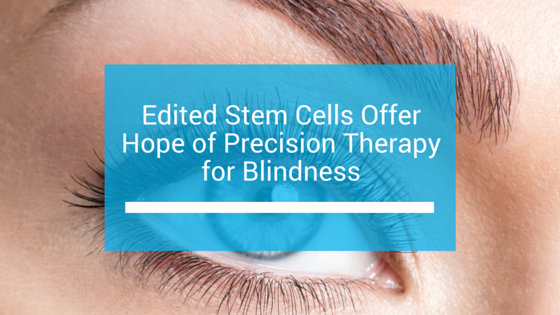
New research has shown that a patient’s own stem cells can be altered and to potentially treat certain blinding eye diseases. University of Iowa researchers worked in conjunction with Columbia University Medical Center ophthalmologists to identify and correct a gene mutation that causes blindness.
The treatment uses CRISPR/Cas9 gene editing to correct the blindness causing gene in the patient’s own stem cells. Researchers would then transplant the edited stem cells into the patient to treat the disease. This type of treatment is a form of personalised medicine that may be useful for treating many other genetic eye diseases.
The disease, called X-linked Retinitis Pigmentosa (XLRP), is an inherited genetic disease that results in a deteriorating retina that eventually causes blindness. The researchers generated some stem cells from a patient’s skin cells and corrected the genetic abnormality in those cells. The edited stem cells could be potentially transplanted back into the patient without the risk of rejection.
The editing technique is extremely precise and only changes the damaged part of the DNA in the stem cells. Another exciting part of the treatment method is that because it uses the patient’s own stem cells, the transplant can be performed without anti-rejection drugs. The research was recently published in the journal Scientific Reports.
Dr Mahajan, clinical assistant professor of ophthalmology and visual sciences in the UI Carver College of Medicine, explains the significance of the procedure, saying: “With CRISPR gene editing of human stem cells, we can theoretically transplant healthy new cells that come from the patient after having fixed their specific gene mutation. And retinal diseases are a perfect model for stem cell therapy, because we have the advanced surgical techniques to implant cells exactly where they are needed.”
Developed in the last few years, CRISPR/Cas9 is a major breakthrough in genetic engineering and allows doctors to easily make adjustments to the DNA in cells. It may lead to cures for many genetic diseases and by using autologous stem cells, doctors can deliver the repaired genetic material back into the body very easily.
Source: Edited stem cells offer hope of precision therapy for blindness
{{cta(‘010124f3-c9bc-4a23-b9fc-74953e6288c9’)}}
{{cta(‘fec594e9-5433-4350-9180-2bdd371eb399’)}}


